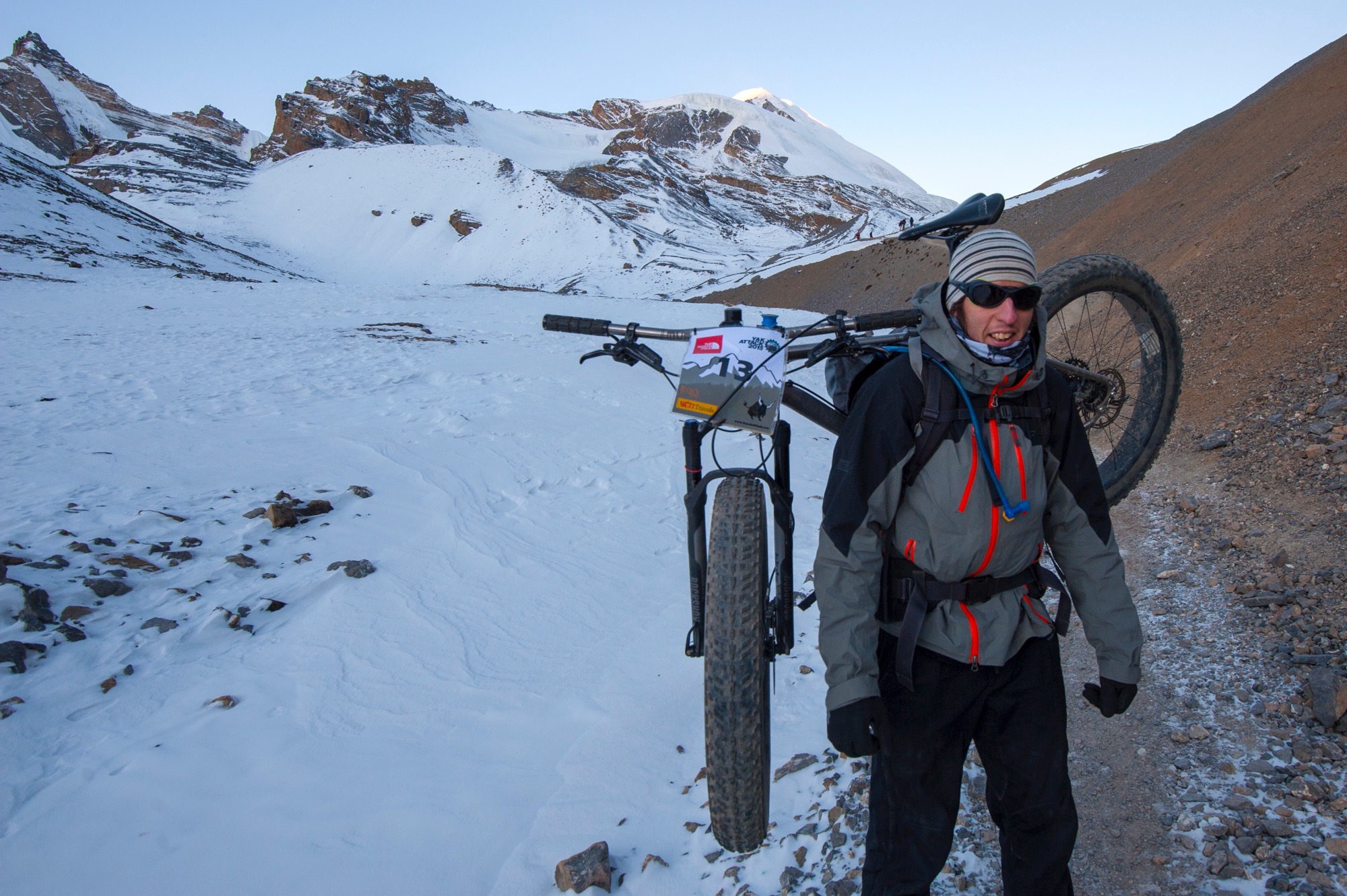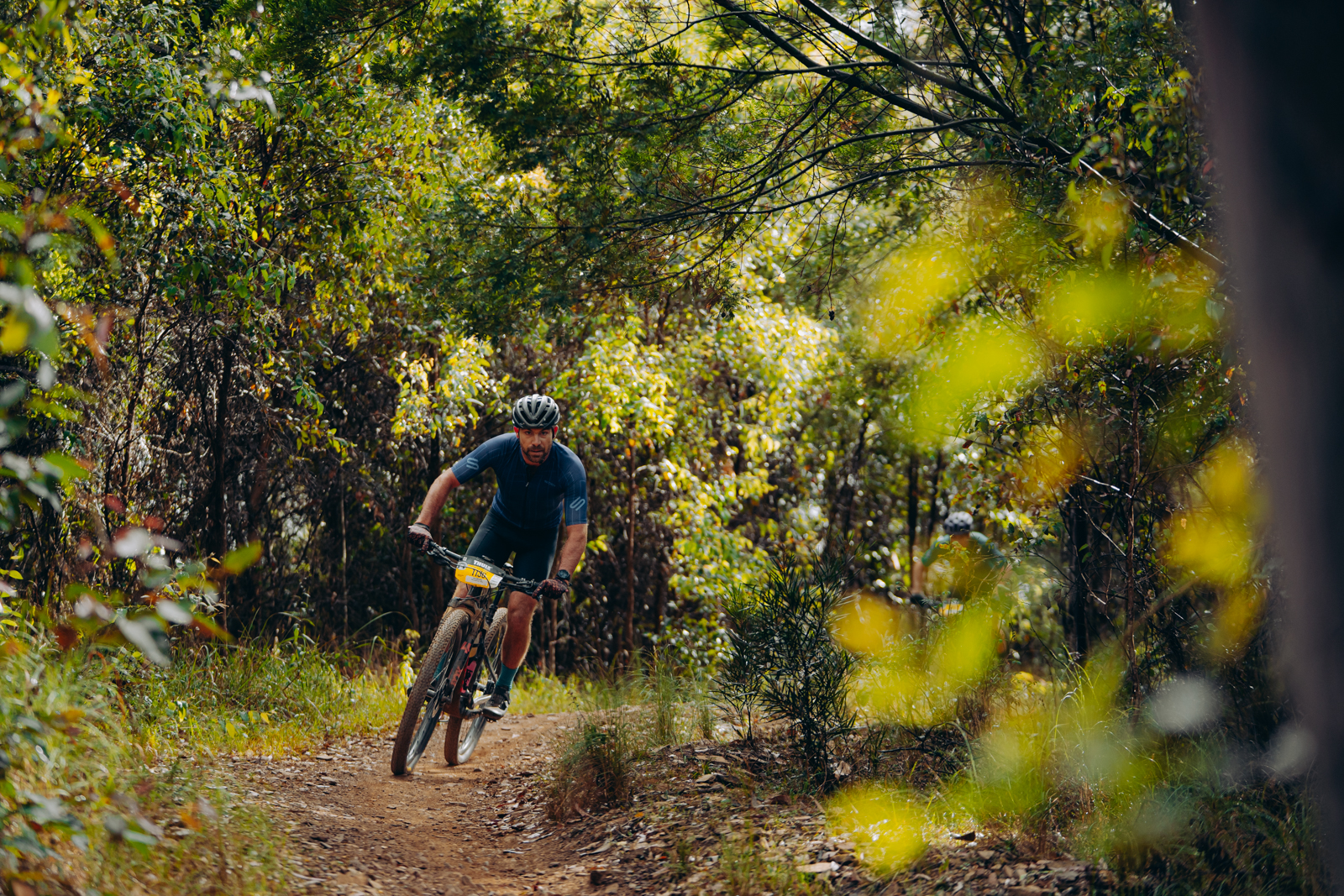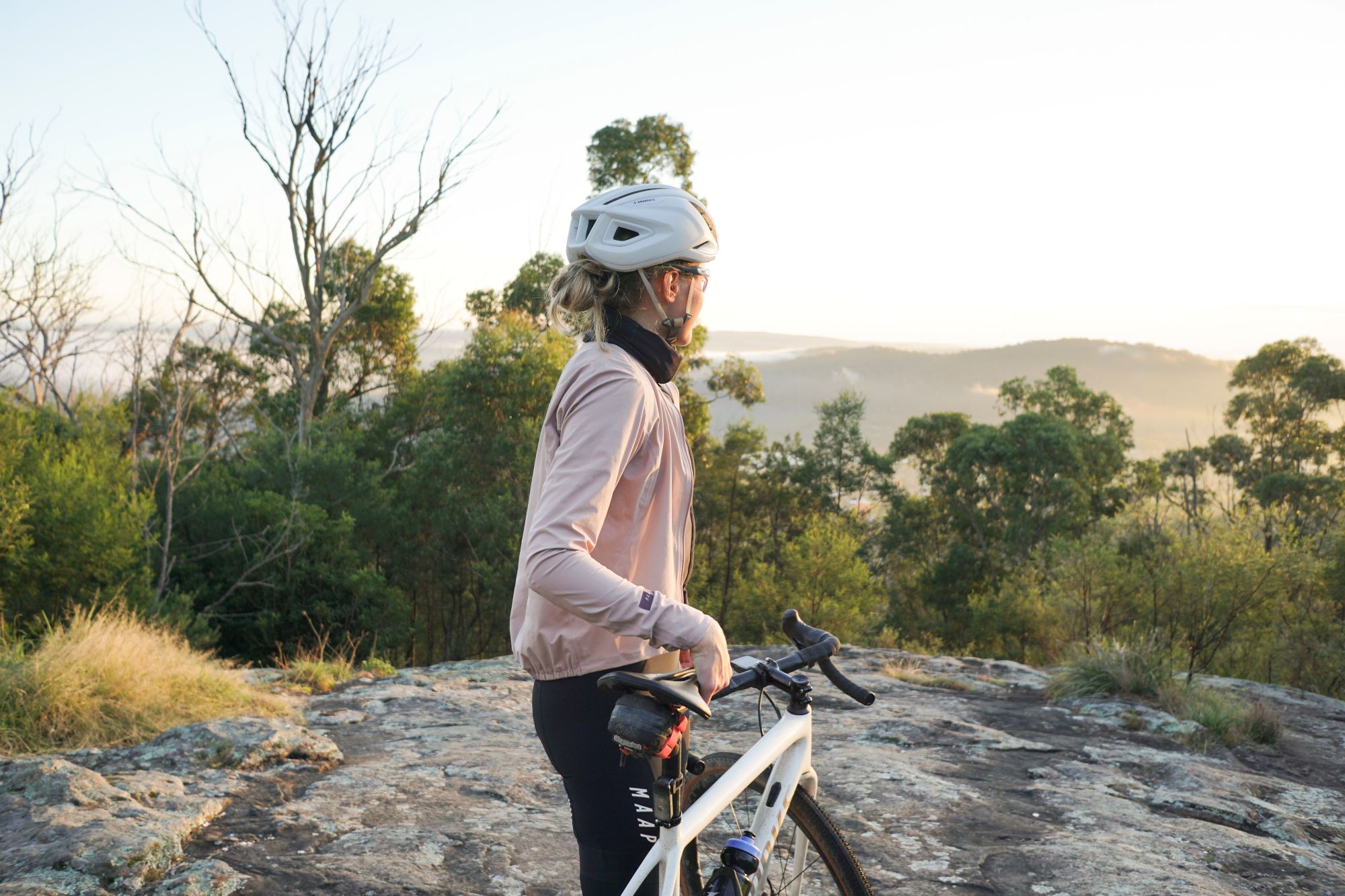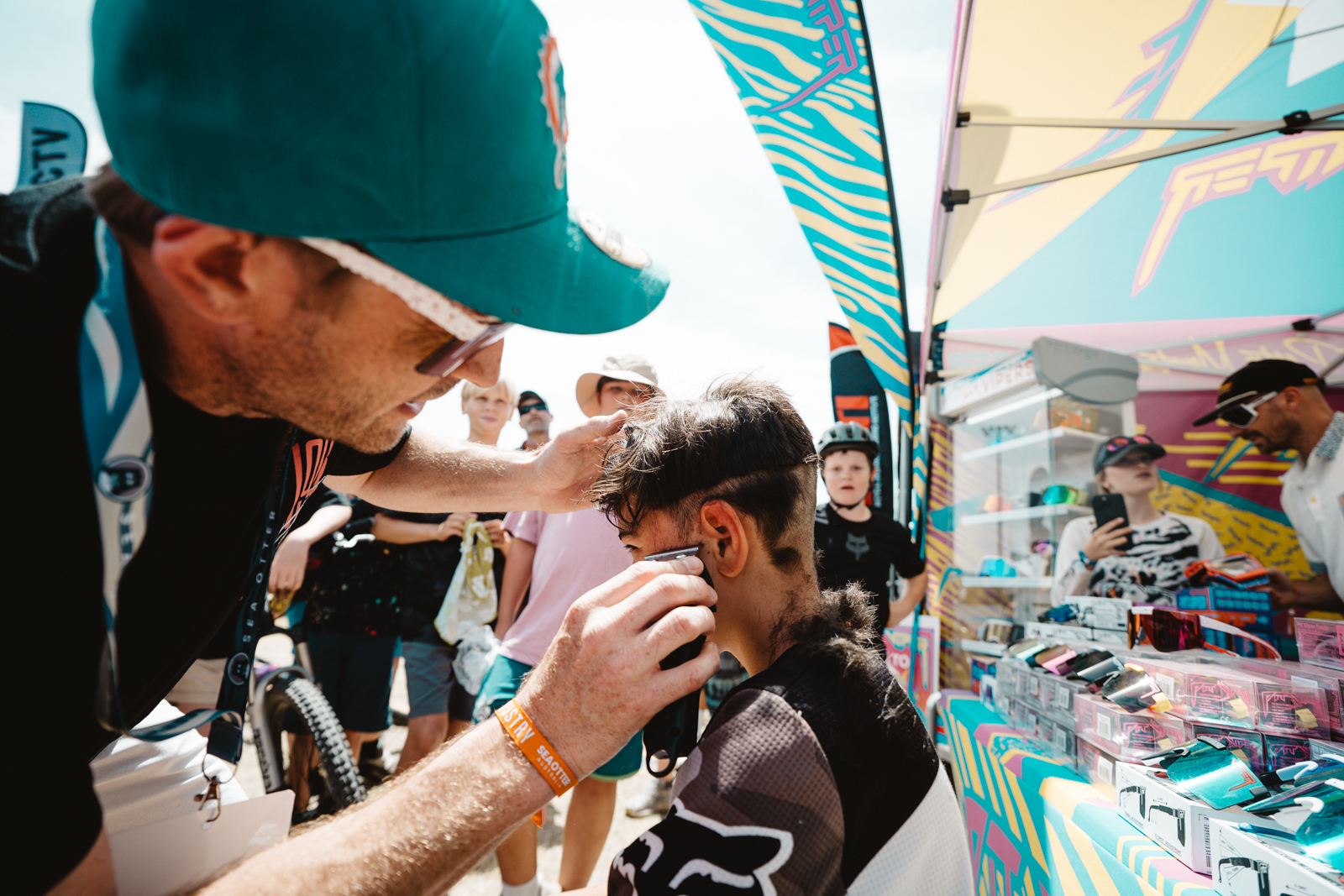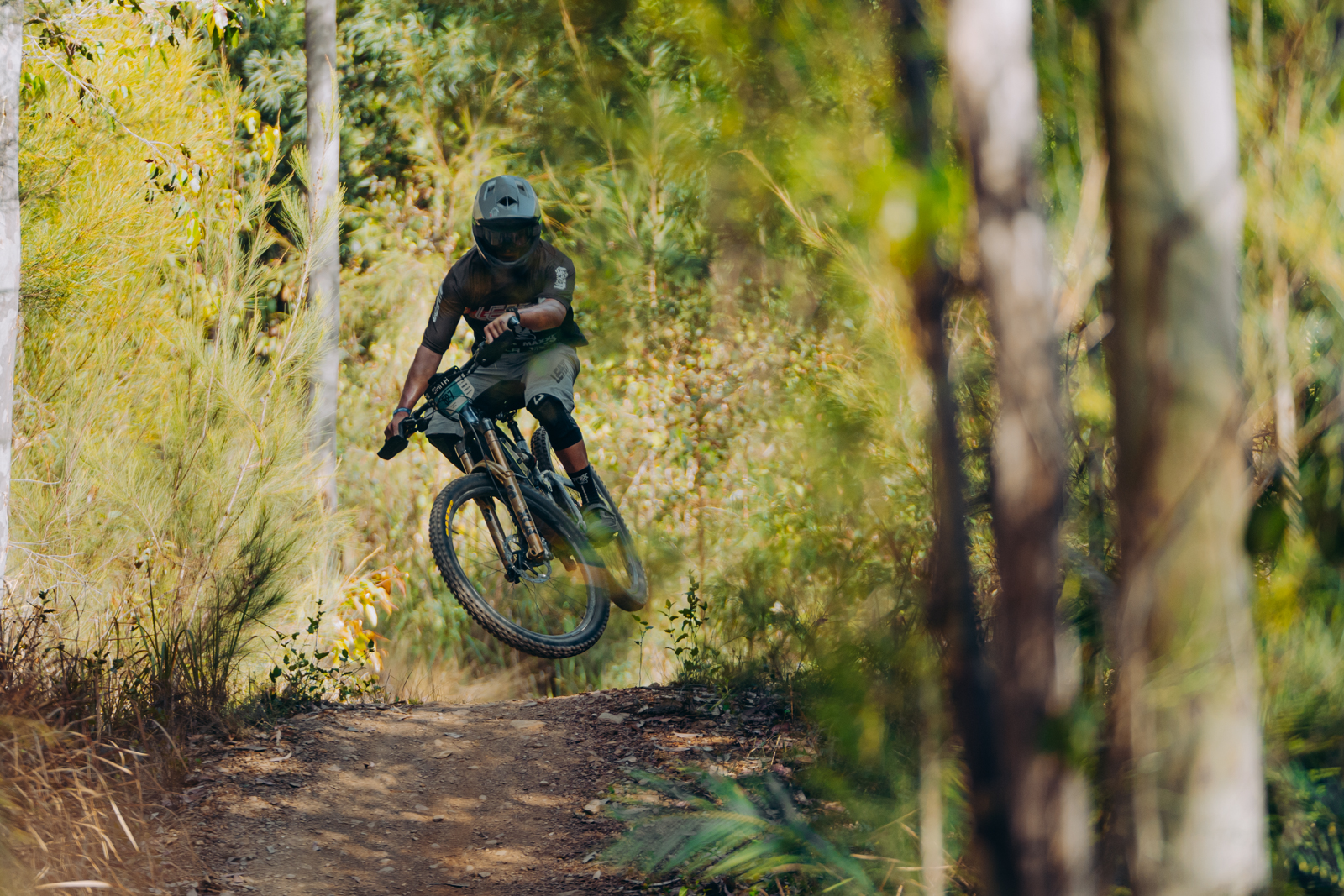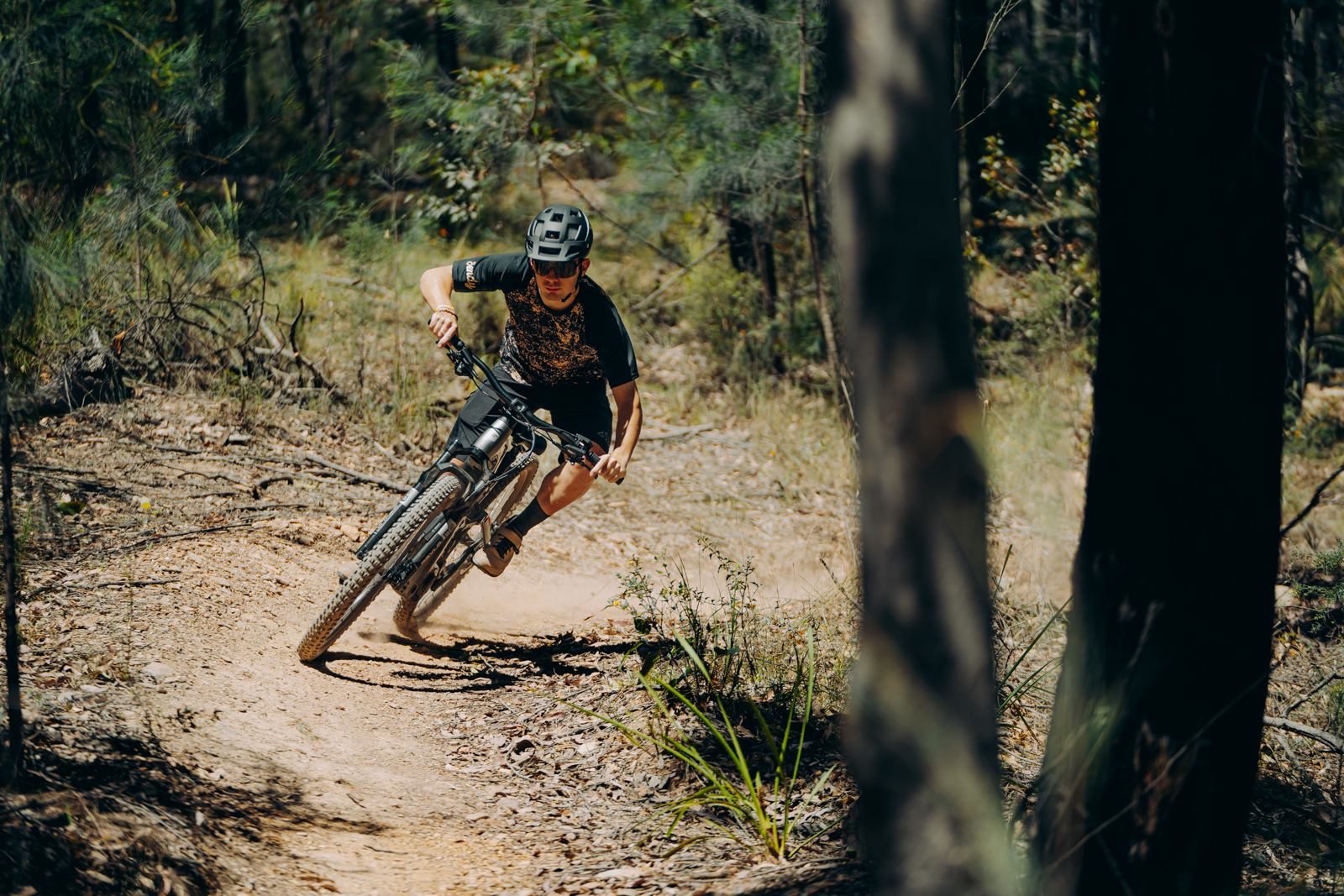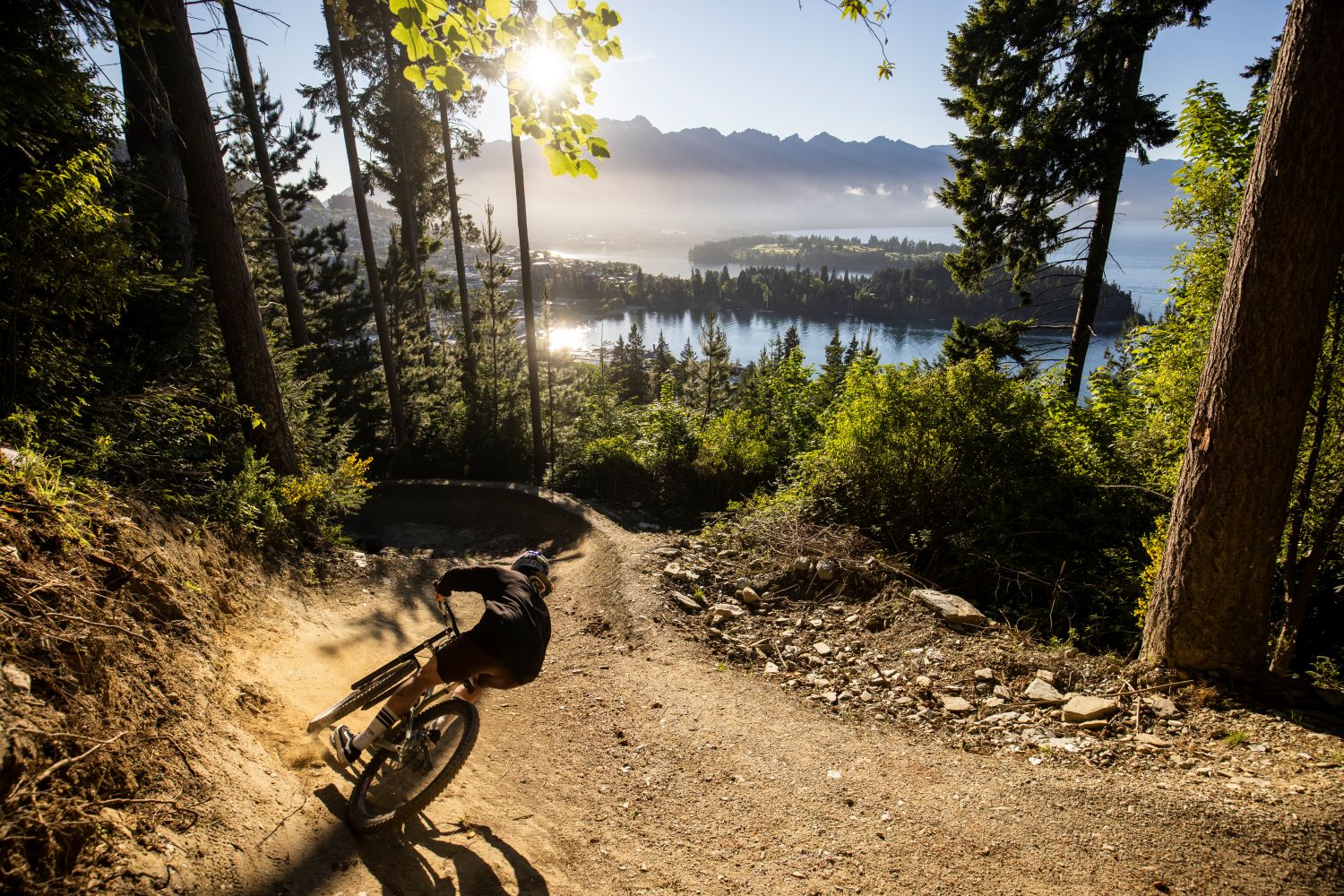MTB Photography - a closer look at World Champs
After shooting thousands of photos at Lenzerheide for the MTB World Championships - how does a photographer pick their favourites?
Now the dust has settled on the Mountain BIke World Championships in Lenzerheide, Switzerland, we can look back at what an event it was. Some are saying it has been the biggest MTB World Championships ever. We don’t have the statistics to verify that – but it was huge!
There were close to 30,000 spectators, the sun was shining (ok not so much on Thursday), BBQs were fired up spreading smoke into the base of the downhill course, and everyone was cheering riders – no matter where they were coming.

We asked Matt Rousu to select his favourite images from the World Championships – and explain how he shot and edited them.
Words and images: Matt Rousu
I’ve been flicking through my photographs from Lenzerheide over the last few weeks and thought a few precise technical details and stories might lend some light into how to (and how not to) photograph an event as epic as the World Championships.
All photos were shot on my Nikon D750
Lenses used for these photos were either my:
Tamron 70-200mm f/2.8 G2
Tamron 24-70mm f/2.8 G2
Every shot was taken at 5300K (Sunny) colour temperature.
During post production every photo goes through subtle changes to try and get them to look natural, I’m not a huge fan of over-editing. Basically a tweak in the levels, perhaps a little colour adjustment, a boost in saturation and some dodging and burning. I’ll mention any major editing techniques in the photos I spent more time on.
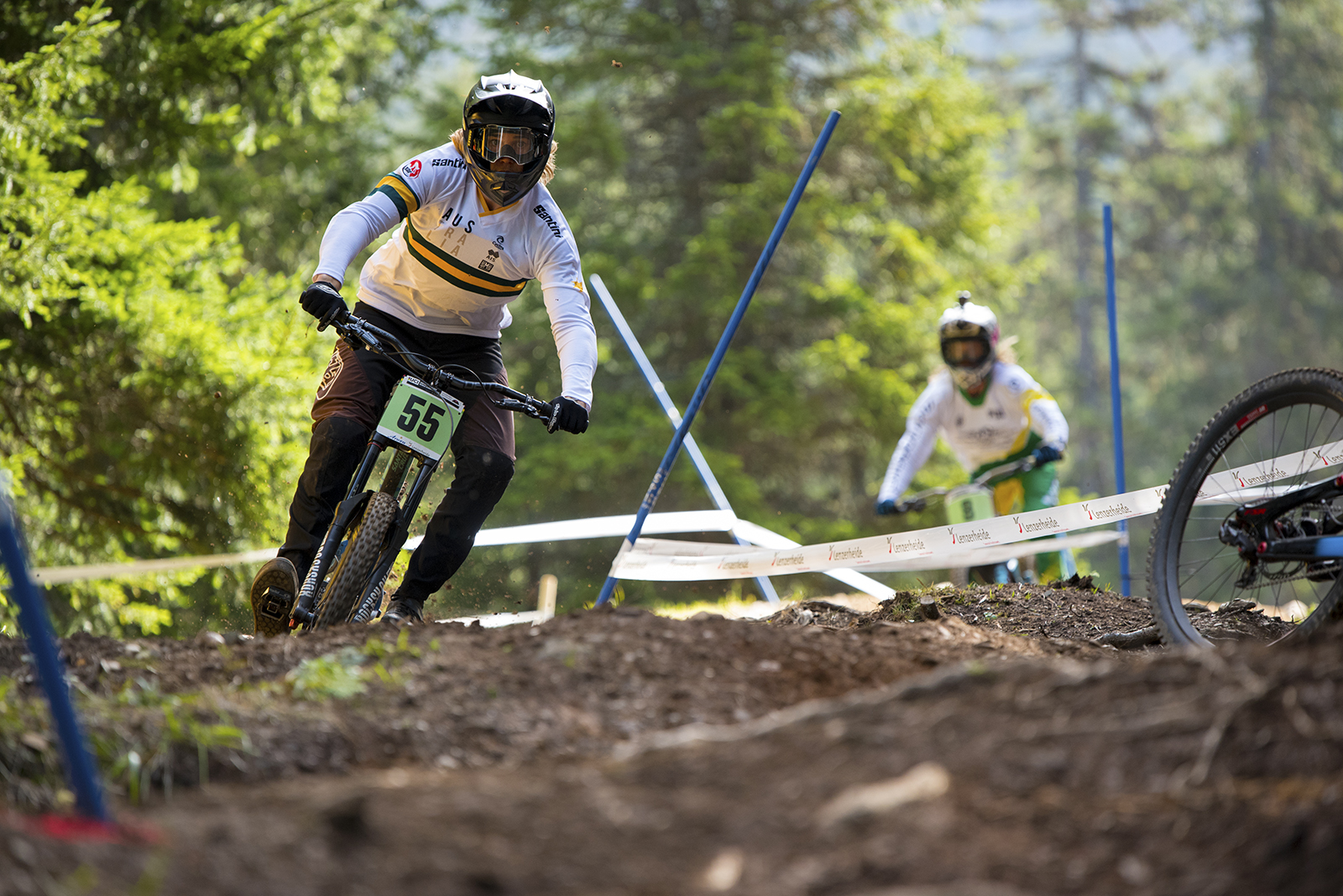
Aaron and Paddi. F/3.5 at 1/1000 Shot at 200mm ISO1250
Let’s start with a pretty straight forward shot of Aaron Gungl and Paddi Butler during day one of DH practice, I was quite low to the ground to give a little foreground detail but also to be able to look up into Aaron’s face. The depth of field is really shallow thanks to my workhorse 70-200mm f2.8 lens (If you’re thinking of getting into MTB photography, save up and get one of these), but what really makes the photo sing is the little pocket of light that Aaron has just ridden through that has reflected off his Aussie jersey. Not only is he in sharp focus but he’s highlighted in a way that your eye is immediately drawn to him, the angle of his lean leads your eye into the rider in the background which will probably make you think of going for a ride with your friends. I can imagine that without that little pocket of light the photograph wouldn’t be nearly as successful.
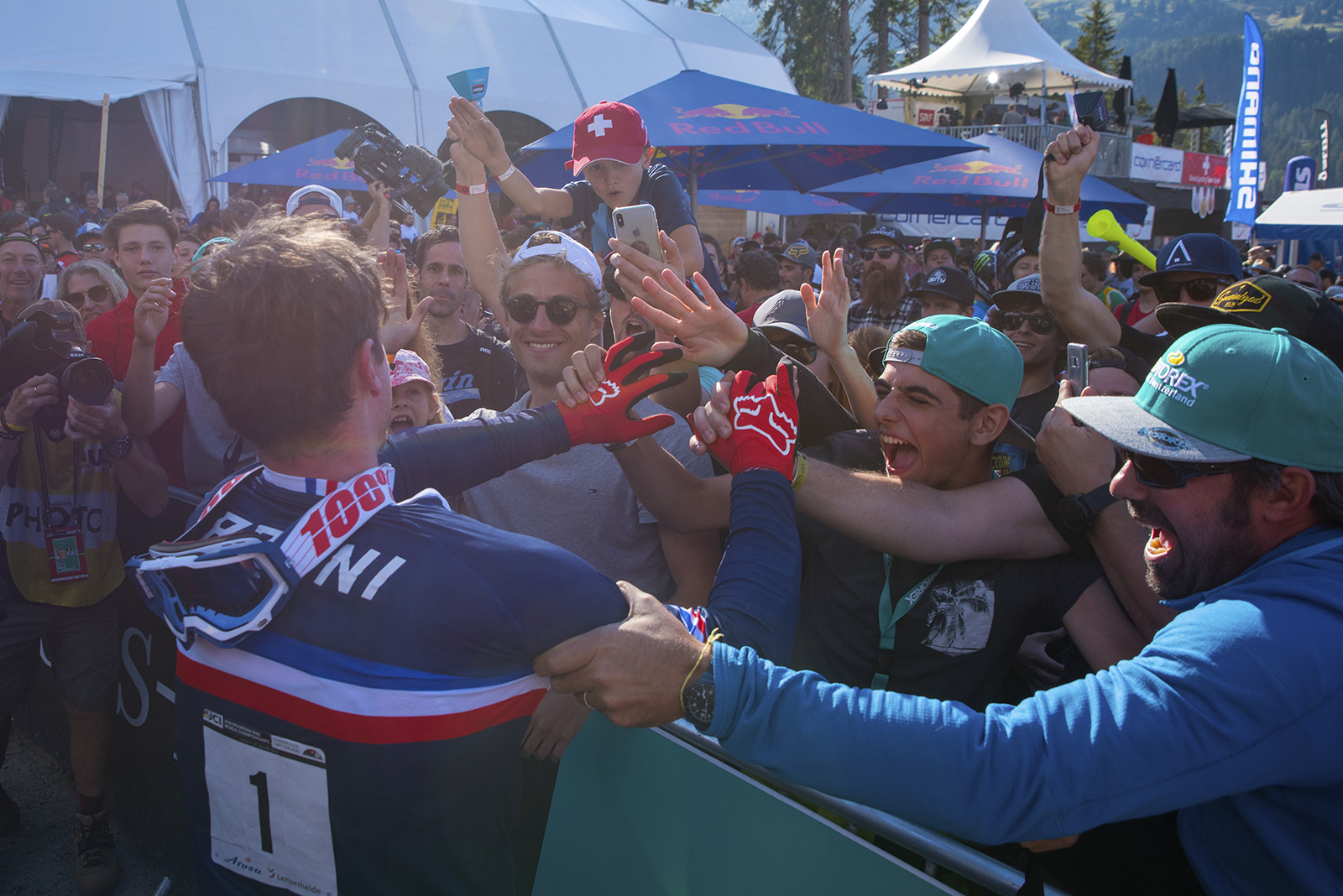
Bruni Wins. F/5.6 at 1/800 Shot at 24mm ISO 400
It’s hard to go past a celebration photo. Here’s Loic Bruni moments after winning the Elite Downhill title. I can tell you that elite men’s DH win is the biggest celebration of the entire weekend. It’s actually pretty difficult to get in front of all the other photographers during the celebration which is why it’s the only time I put my camera on aperture control Auto (Yes Auto!). The celebration is often fierce but pretty short, so I always flick my dial from Manual to Auto before entering the media scrum just to make sure. Of the 100 or so photos that got snapped in that short period this is my favourite. It’s mainly because of the sun light flare which gives the celebration a kind of timeless feel, but also the intensity of the crowd and how stoked they are to see Loic win.
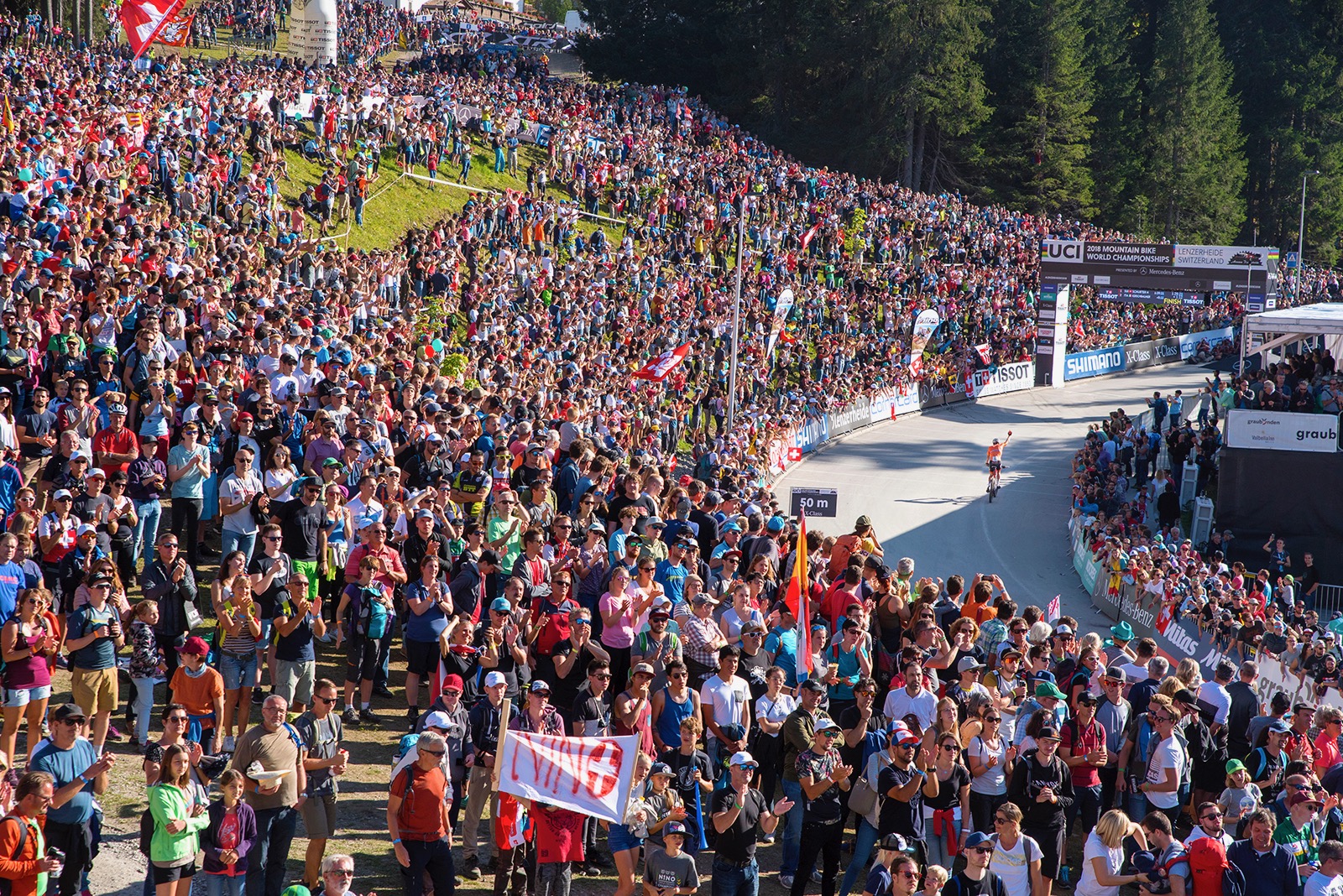
Crowd and Van der Poel. F/6.3 at 1/1250 Shot at 70mm ISO 400
So, the story behind this one is more physical than technical… During the Elite Men’s XCO race I had a plan to run to the finish line after capturing the last of the Aussie riders on the second last lap giving me about 15 minutes. Unbeknown to me, the last of the Aussies was pulled from the race before starting that lap and I was left in no-mans land as Nino and Gerhard came into view with about 5 minutes to race. I was franticly trying to get to the finish line, but before me was one of the biggest crowds in mountain bike history. I got as far as a few Aussie athletes (pictured bottom right) before realising it was impossible. I scrambled back up the hill to try and find a view point (pissing off heaps of spectators in the process) before turning around to see Nino had already won and Gerhard was about to finish, I was devastated… But luckily AMB had another photographer at the finish so I didn’t feel so bad. Instead I was able to capture one of my favourite shots from the whole week, Mathieu Van Der Poel riding into the finish to take bronze in front of the huge crowd, proving there is always a silver lining and I guess there will always have a pretty good story behind it too.
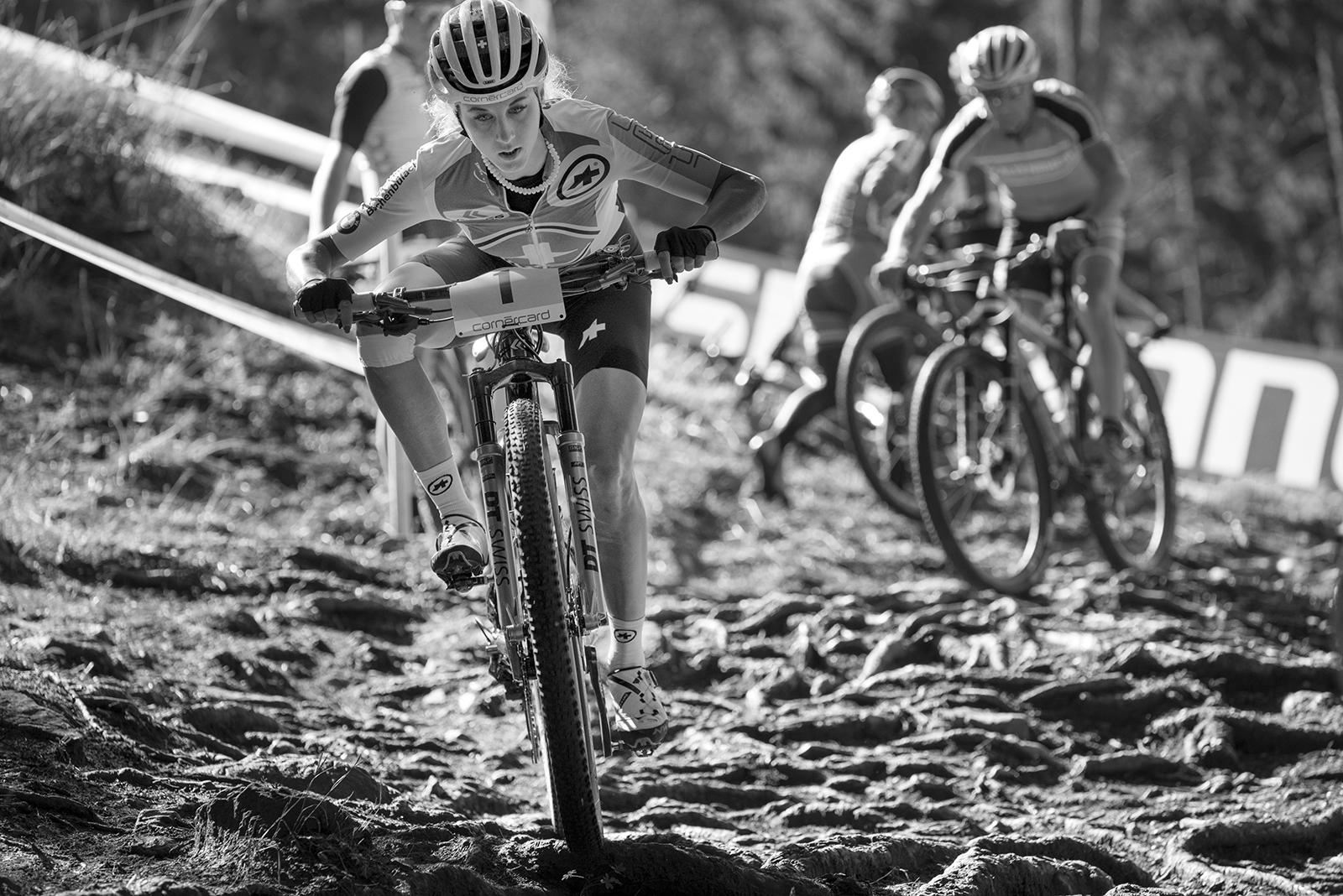
Jolanda Neff. F/5.0 at 1/1000 Shot at 190mm ISO 800
This photo of Jolanda Neff is a great example of post production editing. I was really happy with the focus and the composition of the image, but Jolanda was super underexposed. This was due to her just dipping into the shadow of the forest. You can see the the sunlit terrain behind her (which I had exposed for) but I wasn’t able to capture her there as she was following another rider. Now most times I would have deleted this image but I really liked her aggressive stance and focus. I tried to Dodge and Burn (a difficult old darkroom technique to lighten dark areas and darken light areas which is now one of the most used tools on photoshop) but the colour was just way too fake, the solution was to make it black and white. I’ve learnt over the years that you can get away with a lot more dodging and burning of black and white photos and this technique really served me well this time. Look at Jolanda’s left arm and then at her face and you can easily see the difference.
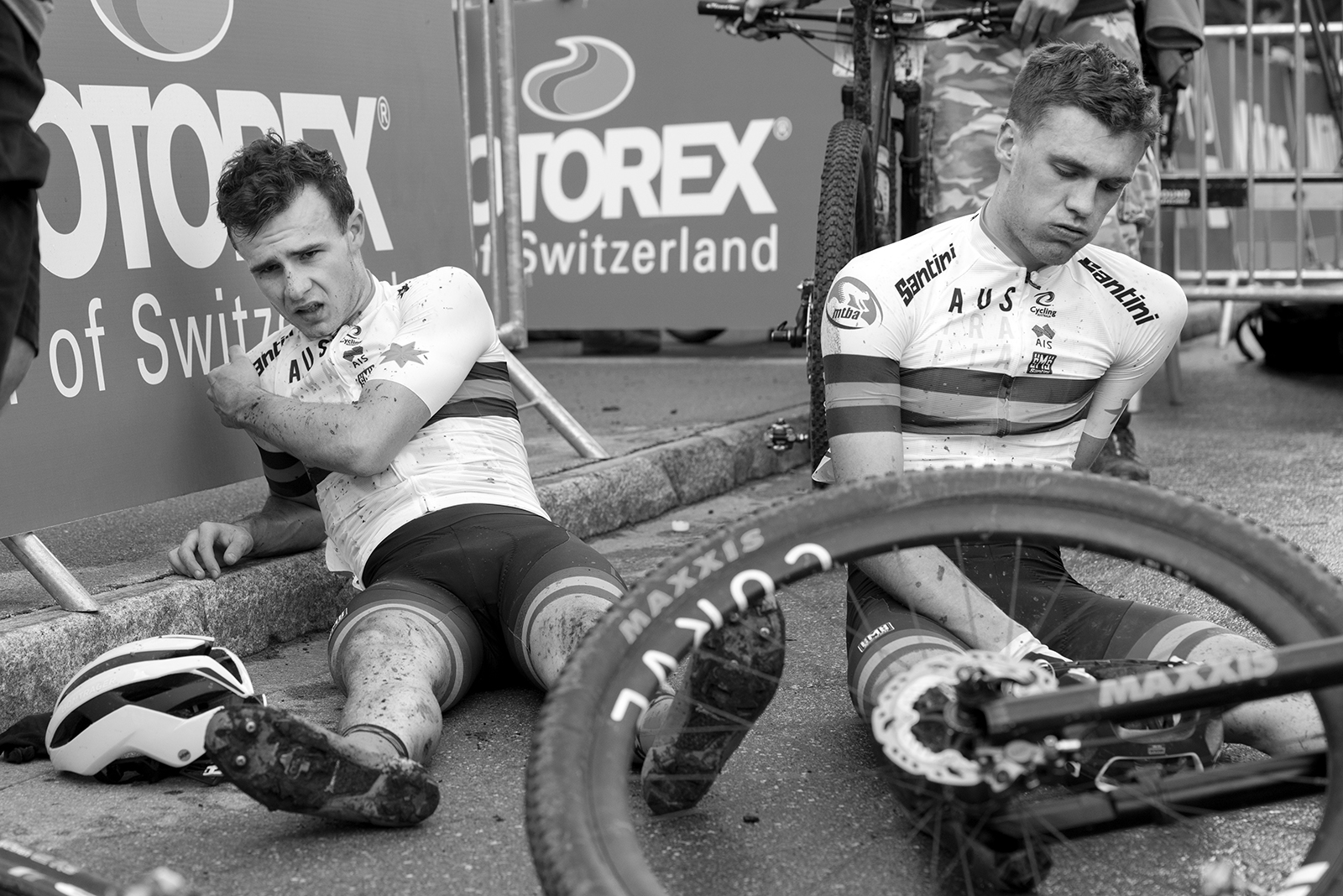
Matt and Sam. F/5.0 at 1/320 Shot at 70mm ISO 800
Another use of black and white, but for a completely different reason. At first glance there isn’t much technical going on with this photo, but there’s always a bit of a story to capturing such raw emotion. Before going to Switzerland I hadn’t met either Matt Dinham or Sam Fox, I knew who they were and had done some research on them going into the event but that didn’t really give me a good connection with them. Luckily I bumped into both Matt and Sam, along with Corey Smith while they were training on course early in the week, I followed them around as they were having fun riding together and finding lines. I was able to take a heap of photos of them while they tried and retried a bunch of different sections, it was the perfect start to the week as I was able to chat with the boys and they were stoked to have someone to specifically take photos of them. I’m convinced that without that initial connection these boys would not have been as willing for me to be in their faces after a race where both had high expectations and had not achieved them, they were upset, sore, and vulnerable. Remember that it’s not always about the pixels, having said that making the photo black and white takes their emotion to another level.
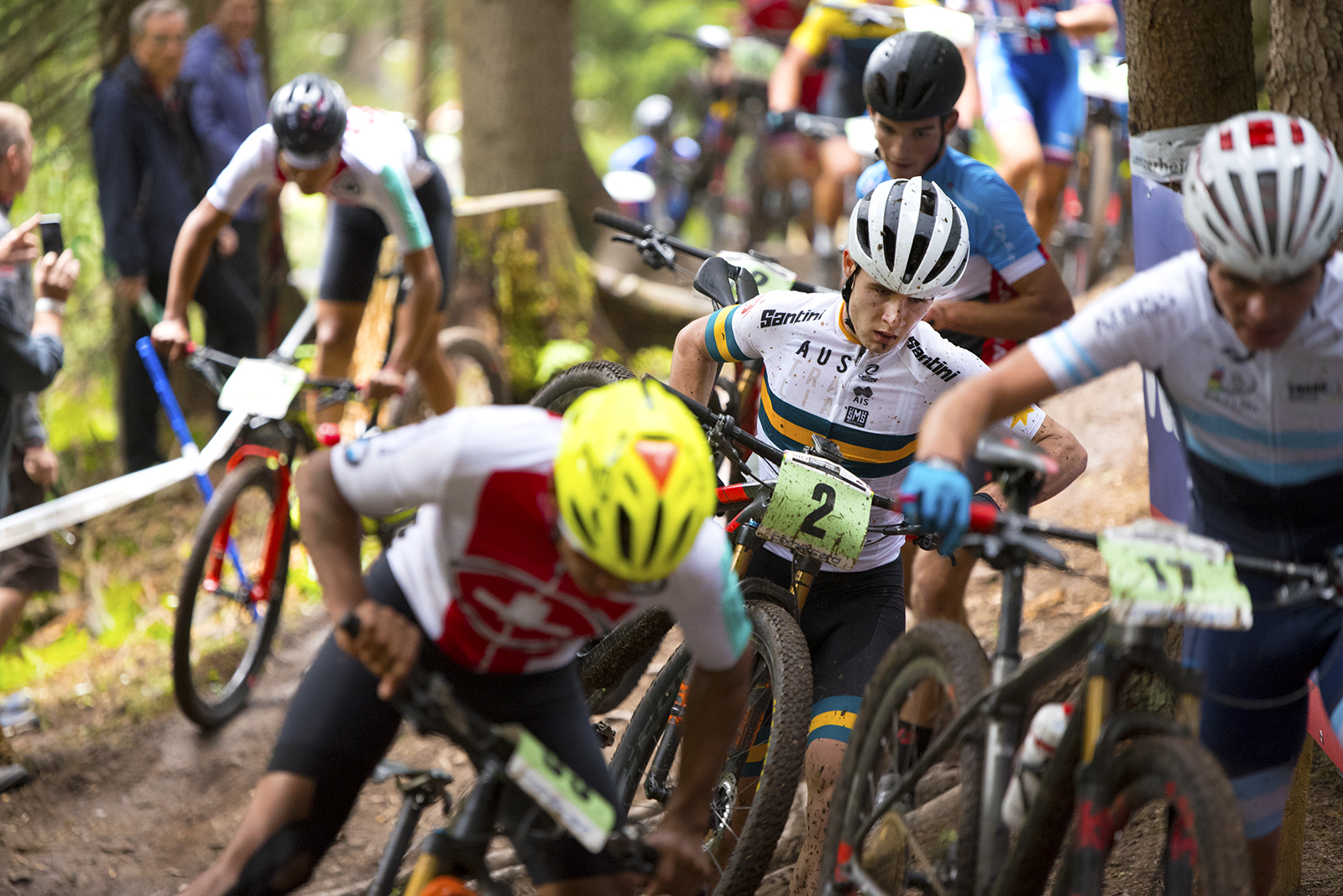
Matt Dinham. F/2.8 at 1/500 Shot at 180mm ISO 2000
This photo of Matt Dinham is one of my favourite race photos. It’s a real battle out there if you get caught up in the field and that’s what happened to Matt. He actually had an amazing start to the race and was leading going into the single track! Unfortunately he crashed hard in the root garden (See Jolanda Neff photo) and lost heaps of ground. On lap 2 he was well back in the field and unable to attempt riding this tricky off camber root garden. Now, a group of riders is usually really hard to capture well; but when you have a specific subject to focus on it becomes a little easier. I always (90% of the time) use spot focus when shooting mountain biking which allows you to pick out a subject and track it (imagine a tiny little rectangle inside the viewfinder as you look through the eye piece, this becomes your focus point for every photo). There’s also the very shallow depth of field thanks to the f/2.8 aperture selection which blurs out everything in front of and behind Matt, this puts the entire focus on Matt and really highlights his personal experience within the field. You’ll also notice the really high ISO of 2000, that’s about as high as I really like to push the ISO due to the amount of noise above that, you never know if your photo will end up on a billboard or enlarged canvas and not just on your Instagram feed.

Rachel Atherton. F/4.5 at 1/1250 Shot at 200mm ISO 1250
You’ll notice a bit of theme when comparing this shot of Rachel Atherton with every other ‘riding’ photo in my selection. Each photo follows the Rule of Thirds, a technique that places your focus point (in this case it’s Rachel) on imaginary lines that divide the photo into thirds. This technique is proven to be more dynamic than putting a subject in the centre or on the edge of the frame (with exceptions) and is one of the first lessons to follow. My lead lecturer at university said I had to learn how to follow the rules before I could start to break them.
I asked him, “How long do I have to learn and follow the rules for?”, his reply; “Matt, I am yet to learn all the rules of photography, so I’m guessing you have a long way to go”. Another feature I like about this photo is how Rachel is sending it out of the shadows and into the sunlight, I absolutely love using natural light to enhance a subject, it’s always the first thing I look for when taking photos. Oh and by the way, I can’t stand using flash during the day, it’s always super obvious and just a lazy technique.
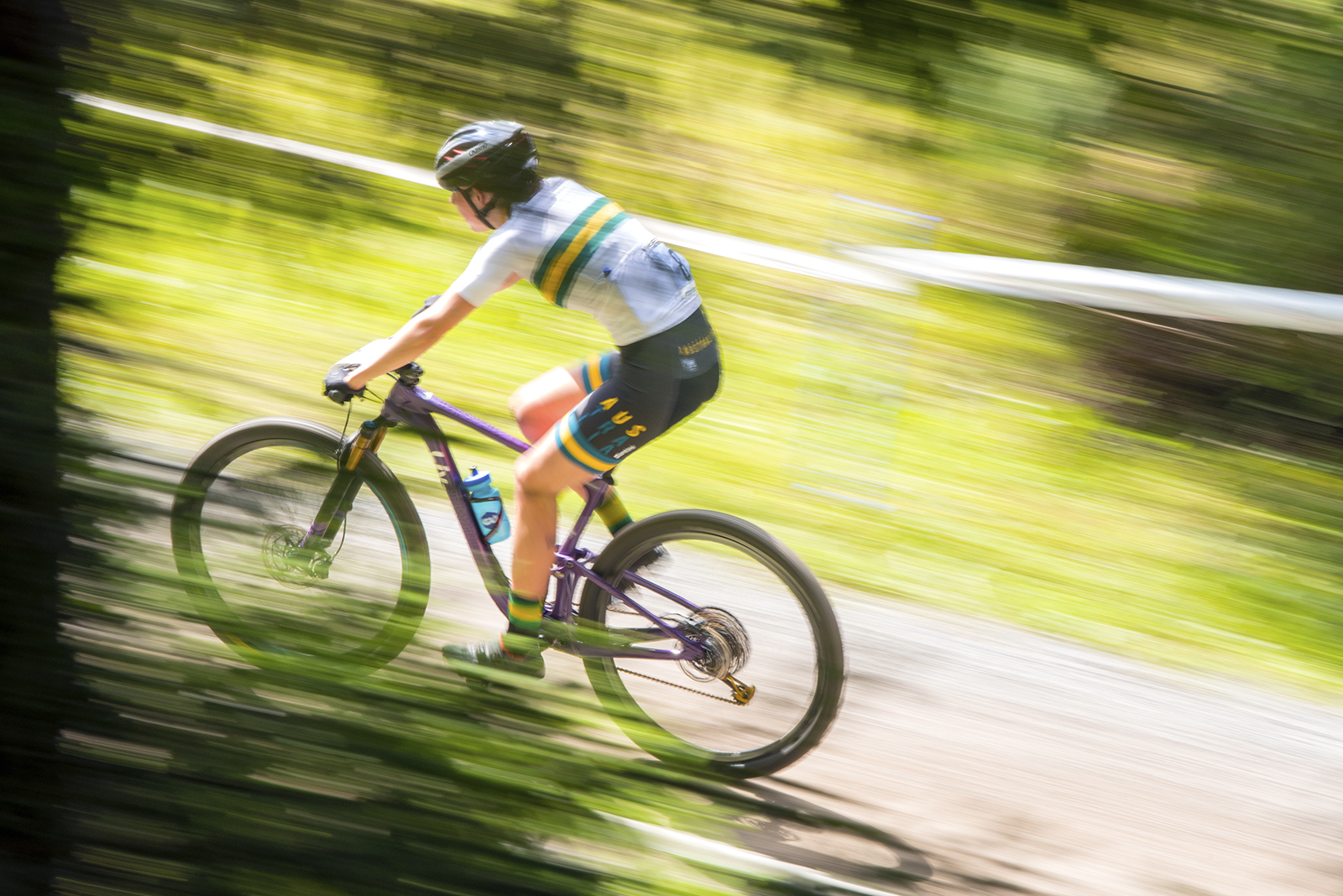
Teagan Atherstone – pan shot. F/22 at 1/25 Shot at 185mm ISO 640
One technique to really seperate you from the average camera wielding spectator is the panshot. XC is the best format of mountain biking to start learning this unique skill. This is because the courses usually have a flatter surface where riders have little up and down movement while you pan (you’d be surprised how much people move around in the air when they are jumping). XC racing is also good to shoot pan shots because you just have more opportunities. This photo of Teagan Atherstone was taken about 30 seconds after photographing her traverse across a tricky off-camber root garden, the course looped back on itself so I had time to adjust the aperture and shutter speed, switch the focus to manual (saves the camera from lagging a little, plus at f/22 it’ll most likely be in focus) take a few deep breaths, find steady feet and think smooth! This gave me two completely different photos from the exact same spot! Colourful crowds also work well with pan shots, but this is probably my slowest successful pan at 1/25 of a second so its my favourite one of the week.
I hope that lends a little more insight into what goes into capturing The Mountain Bike World Championships. Although they were exhausting long days (and nights) it was a thoroughly enjoyable week behind the lens and I can’t wait to do it all again next year. I’ll be photographing a heap of events this Aussie summer so if you see me trackside come and say hi, I’m always up for a chat about mountain biking and photography.
Until then, happy shooting!
